Family: Siricidae
Subfamily: Siricinae
Genus: Sirex Linnaeus, 1760
Species: Sirex obesus Bradley, 1913
Common names: none
Sirex obesus is a somewhat rare species from the southwestern United States with a stout, dark body (Schiff et al. 2012Schiff et al. 2012:
Schiff NM, Goulet H, Smith DR, Boudreault C, Wilson AD, and Scheffler BE. 2012. Siricidae (Hymenoptera: Symphyta: Siricoidea) of the Western Hemisphere. Canadian Journal of Arthropod Identification 21: 1-305.).
See Sirex for genus-level diagnostic characteristics.
Females:
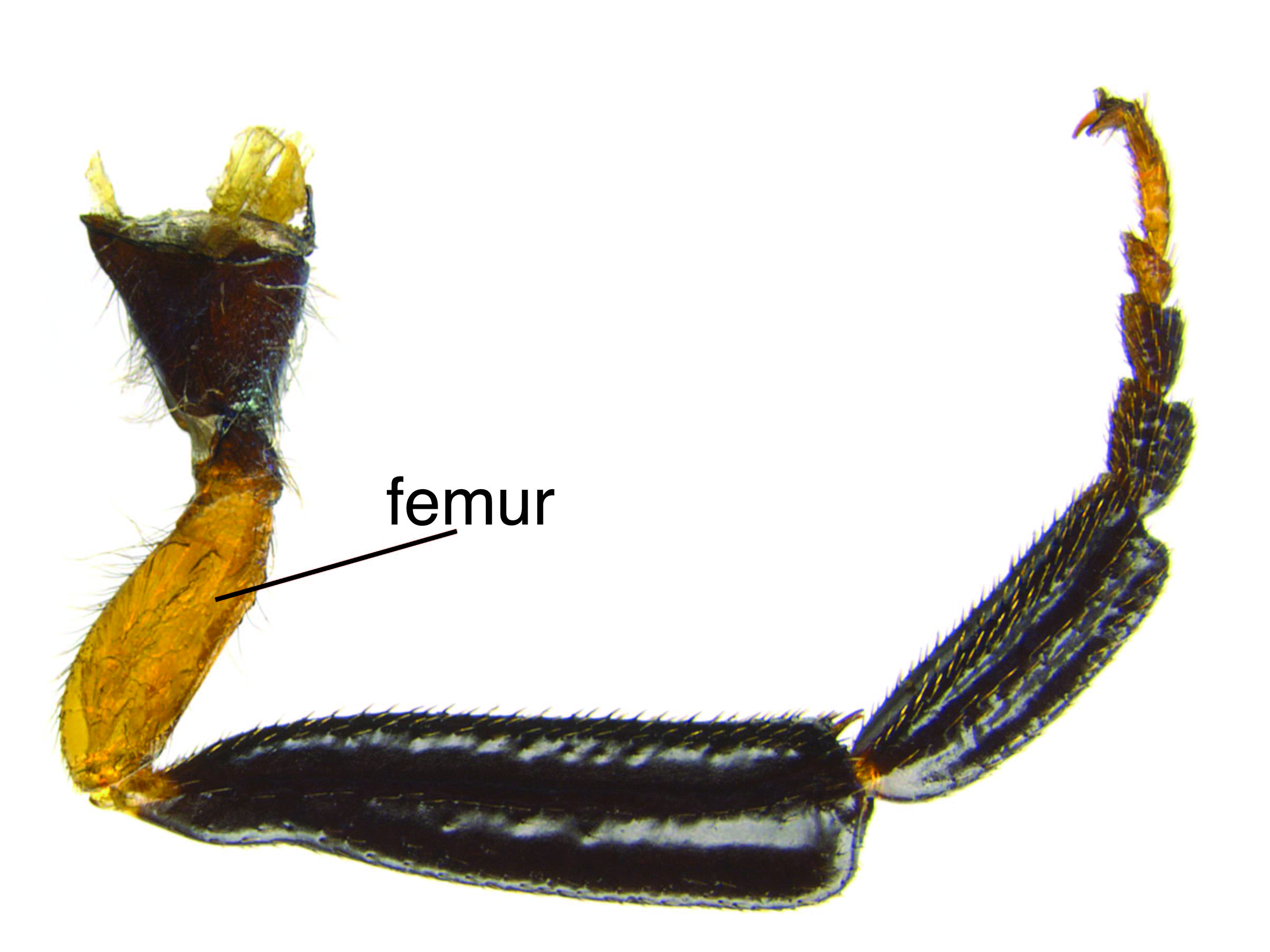 black (Schiff et al. 2012Schiff et al. 2012:
black (Schiff et al. 2012Schiff et al. 2012: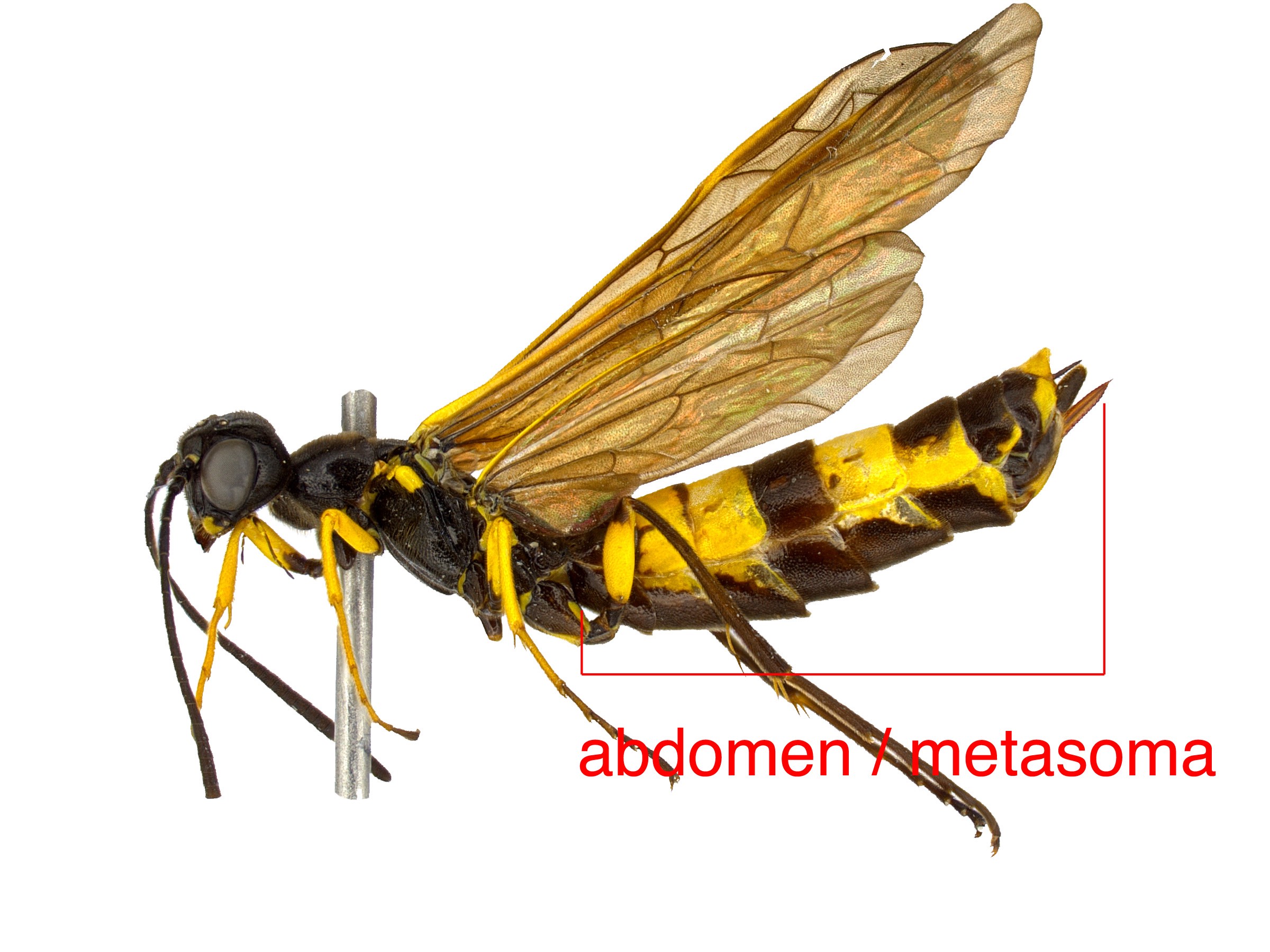 entirely black with metallic reflections (Schiff et al. 2012Schiff et al. 2012:
entirely black with metallic reflections (Schiff et al. 2012Schiff et al. 2012: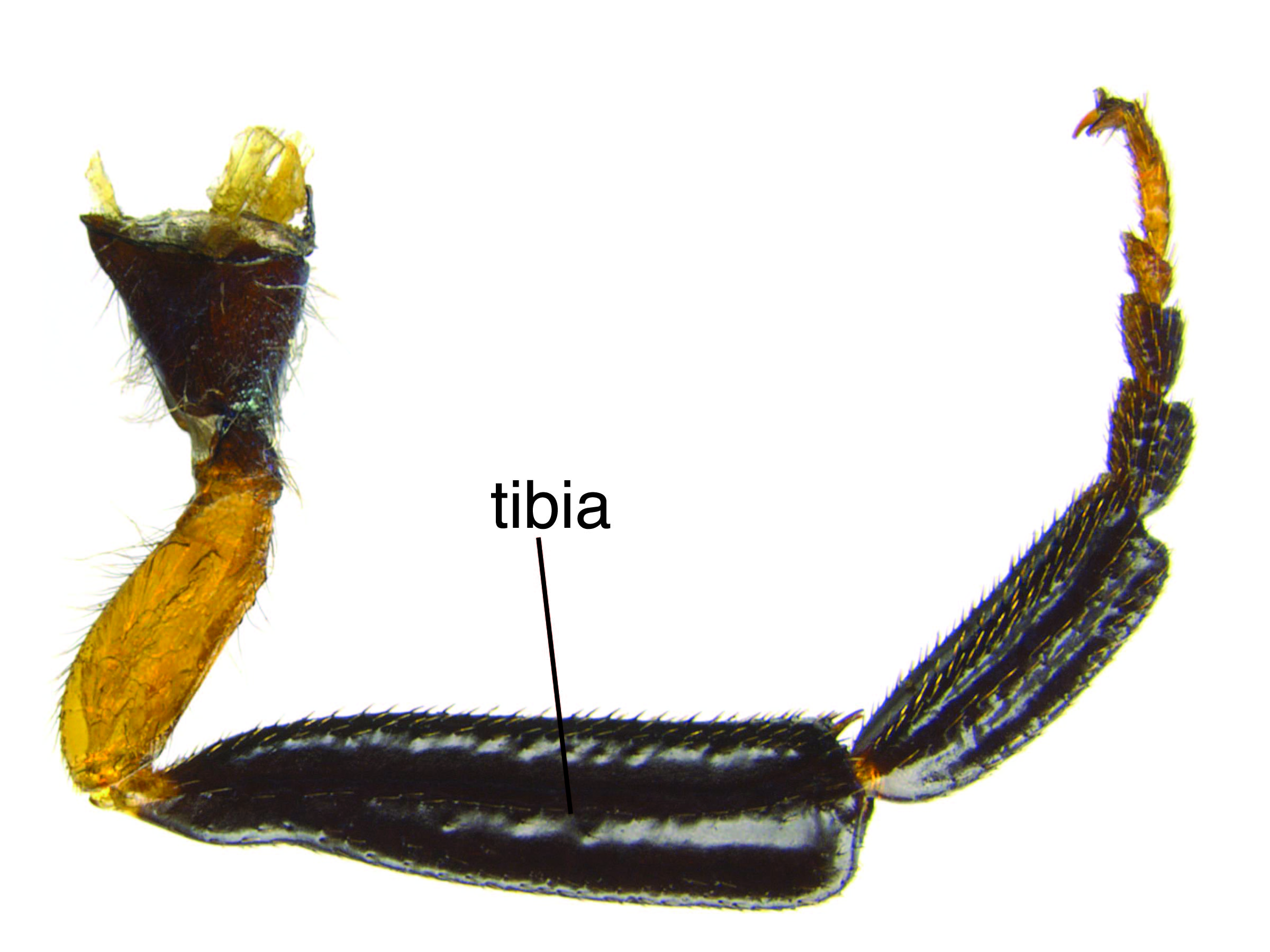 and tarsitarsus:
and tarsitarsus: black (Schiff et al. 2012Schiff et al. 2012:
black (Schiff et al. 2012Schiff et al. 2012: tinted dark brown (Schiff et al. 2012Schiff et al. 2012:
tinted dark brown (Schiff et al. 2012Schiff et al. 2012: vein 3A absent (Schiff et al. 2012Schiff et al. 2012:
vein 3A absent (Schiff et al. 2012Schiff et al. 2012: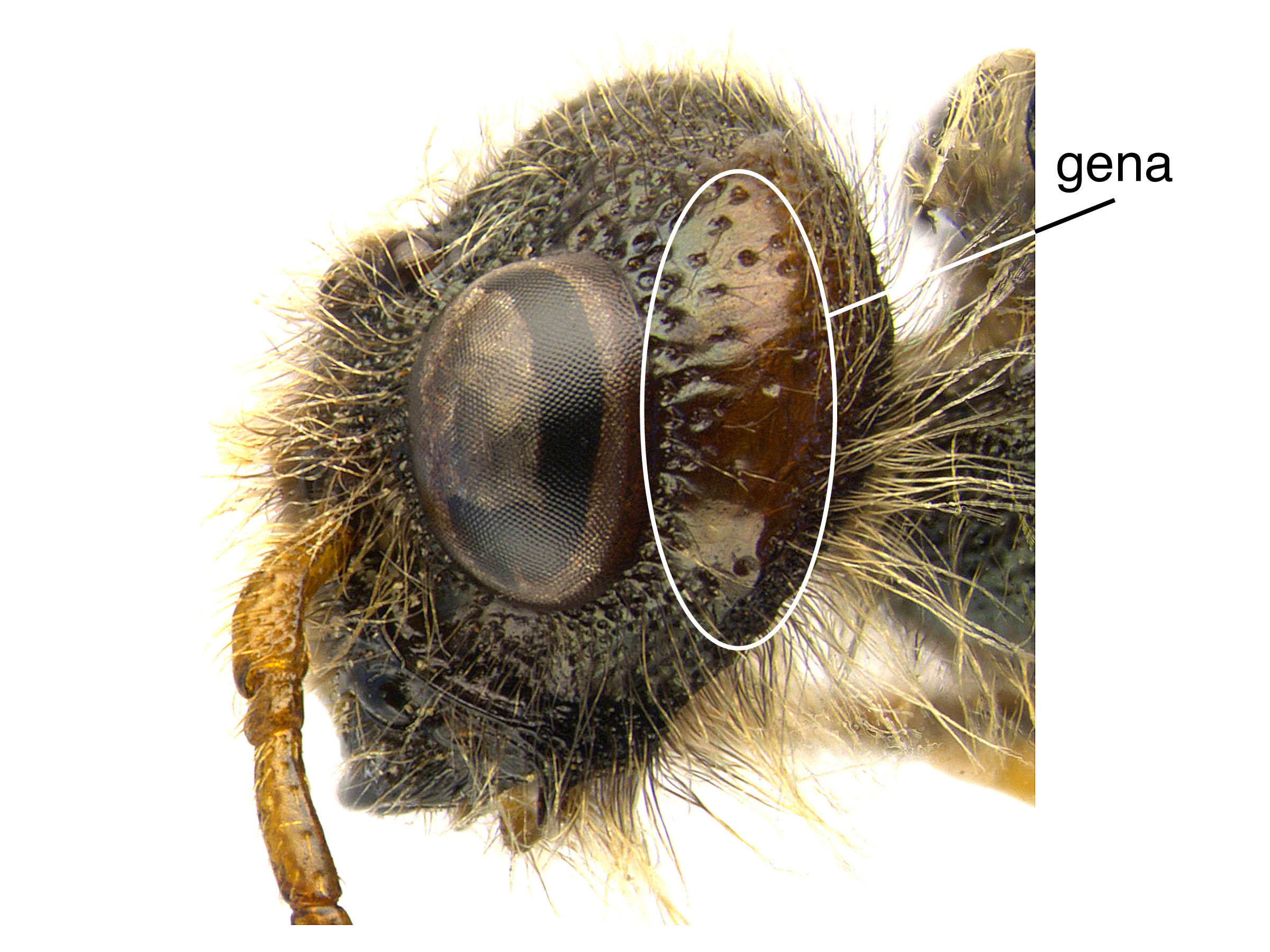 pits large and dense, about 0–0.5 pit diameters apart (Schiff et al. 2012Schiff et al. 2012:
pits large and dense, about 0–0.5 pit diameters apart (Schiff et al. 2012Schiff et al. 2012: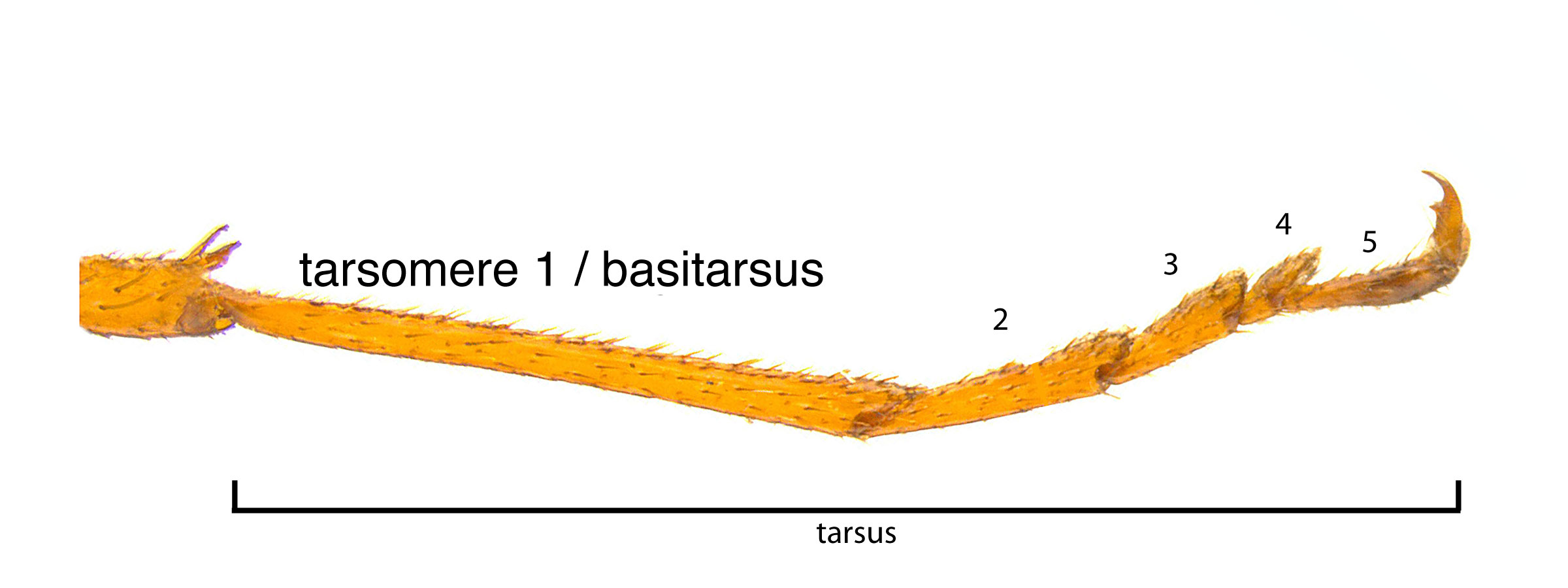 1.5 times as long as wide (Schiff et al. 2012Schiff et al. 2012:
1.5 times as long as wide (Schiff et al. 2012Schiff et al. 2012: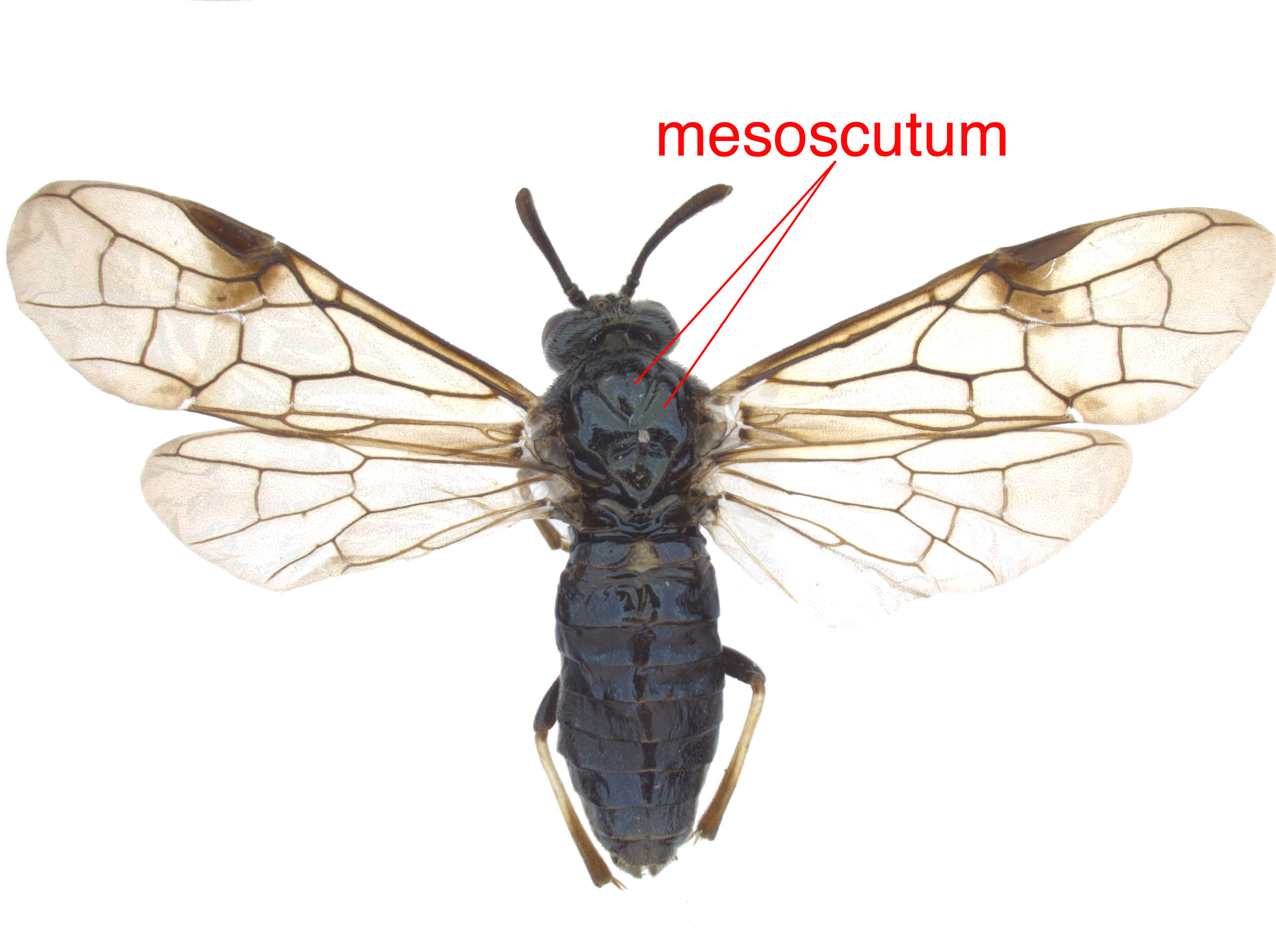 pits large, forming a few transverse ridges (Schiff et al. 2012Schiff et al. 2012:
pits large, forming a few transverse ridges (Schiff et al. 2012Schiff et al. 2012: with pulvilluspulvillus:
with pulvilluspulvillus: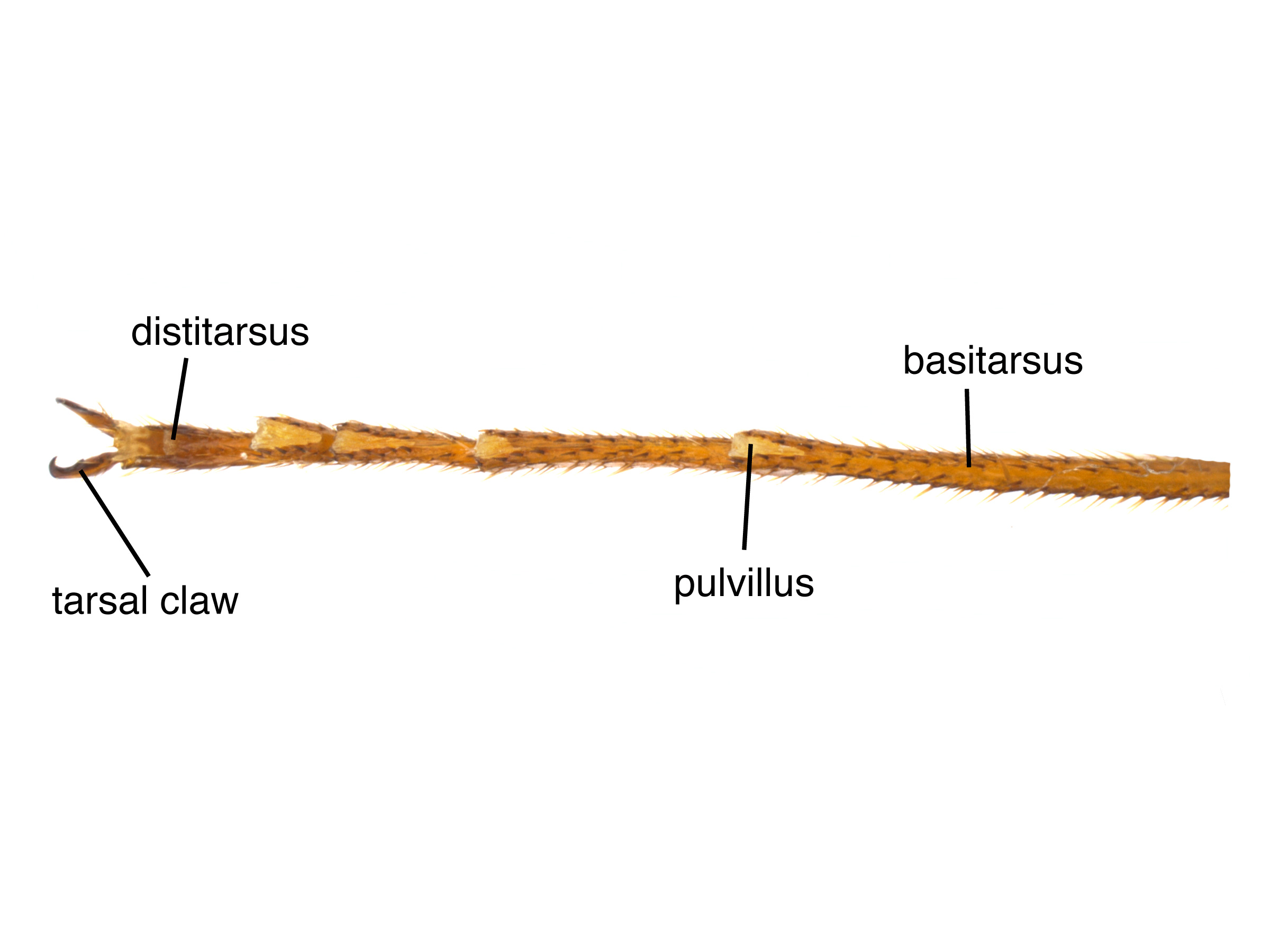 about 0.5–0.7 times length of tarsomeretarsomere:
about 0.5–0.7 times length of tarsomeretarsomere: (Schiff et al. 2012Schiff et al. 2012:
(Schiff et al. 2012Schiff et al. 2012:Males:
 mostly reddish-brown (Schiff et al. 2012Schiff et al. 2012:
mostly reddish-brown (Schiff et al. 2012Schiff et al. 2012: completely blue-black with metallic reflections (Schiff et al. 2012Schiff et al. 2012:
completely blue-black with metallic reflections (Schiff et al. 2012Schiff et al. 2012: reddish-brown with dark band at the basebase:
reddish-brown with dark band at the basebase: pits dense, about 1 diameter apart (Schiff et al. 2012Schiff et al. 2012:
pits dense, about 1 diameter apart (Schiff et al. 2012Schiff et al. 2012: tinted yellow (Schiff et al. 2012Schiff et al. 2012:
tinted yellow (Schiff et al. 2012Schiff et al. 2012: and flagellomereflagellomere:
and flagellomereflagellomere: 1 and 2 (Schiff et al. 2012Schiff et al. 2012:
1 and 2 (Schiff et al. 2012Schiff et al. 2012:Sirex obesus females can be distinguished from S. areolatus and the dark form of S. californicus by the length of the second hind tarsomeretarsomere:
a segment of the tarsus
 and by the dense genagena:
and by the dense genagena:
the area of the head between the compound eye and clypeus; also called the cheek
 pits. The males can be recognized by the black antennaeantenna:
pits. The males can be recognized by the black antennaeantenna:
the sensory organ emerging from the front of the head, usually between the compound eyes and above the clypeus; includes the flagellum, scape and pedicel
 and the yellow-tinted fore wingfore wing:
and the yellow-tinted fore wingfore wing:
the anterior wing of each pair of wings; usually the largest wing of the pair
 (Schiff et al. 2012Schiff et al. 2012:
(Schiff et al. 2012Schiff et al. 2012:
Schiff NM, Goulet H, Smith DR, Boudreault C, Wilson AD, and Scheffler BE. 2012. Siricidae (Hymenoptera: Symphyta: Siricoidea) of the Western Hemisphere. Canadian Journal of Arthropod Identification 21: 1-305.).
none recorded
One specimen of S. obesus was collected from Pinus ponderosa (ponderosa pine) (Schiff et al. 2012Schiff et al. 2012:
Schiff NM, Goulet H, Smith DR, Boudreault C, Wilson AD, and Scheffler BE. 2012. Siricidae (Hymenoptera: Symphyta: Siricoidea) of the Western Hemisphere. Canadian Journal of Arthropod Identification 21: 1-305.).
Female Sirex harbor symbiotic basidiomycete fungus in abdominal glands called mycangia. During oviposition, the site is inoculated with the fungus, which begins to decompose the surrounding wood. LarvaeLarva:
the immature stage of holometabolous insects
 feed on the fungus, and in the process bore galleries through the wood (Johnson 1930Johnson 1930:
feed on the fungus, and in the process bore galleries through the wood (Johnson 1930Johnson 1930:
Johnson CW. 1930. On the variation and abundance of Sirex nitidus Harris. Psyche 37 (3): 281-282. https://doi.org/10.1155/1930/62786, Schiff et al. 2012Schiff et al. 2012:
Schiff NM, Goulet H, Smith DR, Boudreault C, Wilson AD, and Scheffler BE. 2012. Siricidae (Hymenoptera: Symphyta: Siricoidea) of the Western Hemisphere. Canadian Journal of Arthropod Identification 21: 1-305.).
Larvae are creamy white and grub-like in appearance with a dark head capsule. As with adults, larvaelarva:
the immature stage of holometabolous insects
 possess a short dorsaldorsal:
possess a short dorsaldorsal:
of or on the top surface of the body or structure
horn on the posterior end of the body. The larvaelarva:
the immature stage of holometabolous insects
 bore galleries into wood, feeding until pupation and subsequent emergence. Throughout this process, the larvaelarva:
bore galleries into wood, feeding until pupation and subsequent emergence. Throughout this process, the larvaelarva:
the immature stage of holometabolous insects
 use their horn to pack the tunnel behind them with sawdust. Emergence holes are perfectly circular. The fungal symbiont is carried in specialized organs in female larvaelarva:
use their horn to pack the tunnel behind them with sawdust. Emergence holes are perfectly circular. The fungal symbiont is carried in specialized organs in female larvaelarva:
the immature stage of holometabolous insects
 that develop into the mycangia after metamorphosis (Schiff et al. 2012Schiff et al. 2012:
that develop into the mycangia after metamorphosis (Schiff et al. 2012Schiff et al. 2012:
Schiff NM, Goulet H, Smith DR, Boudreault C, Wilson AD, and Scheffler BE. 2012. Siricidae (Hymenoptera: Symphyta: Siricoidea) of the Western Hemisphere. Canadian Journal of Arthropod Identification 21: 1-305.).
The flight period of S. obesus is from late July through late September (Schiff et al. 2012Schiff et al. 2012:
Schiff NM, Goulet H, Smith DR, Boudreault C, Wilson AD, and Scheffler BE. 2012. Siricidae (Hymenoptera: Symphyta: Siricoidea) of the Western Hemisphere. Canadian Journal of Arthropod Identification 21: 1-305.).
World: North America
North America: Sirex obesus is only known from Arizona and New Mexico in the southwestern United States (Schiff et al. 2012Schiff et al. 2012:
Schiff NM, Goulet H, Smith DR, Boudreault C, Wilson AD, and Scheffler BE. 2012. Siricidae (Hymenoptera: Symphyta: Siricoidea) of the Western Hemisphere. Canadian Journal of Arthropod Identification 21: 1-305.).
No specific locality data was available for mapping the range of this species at the time of publication.